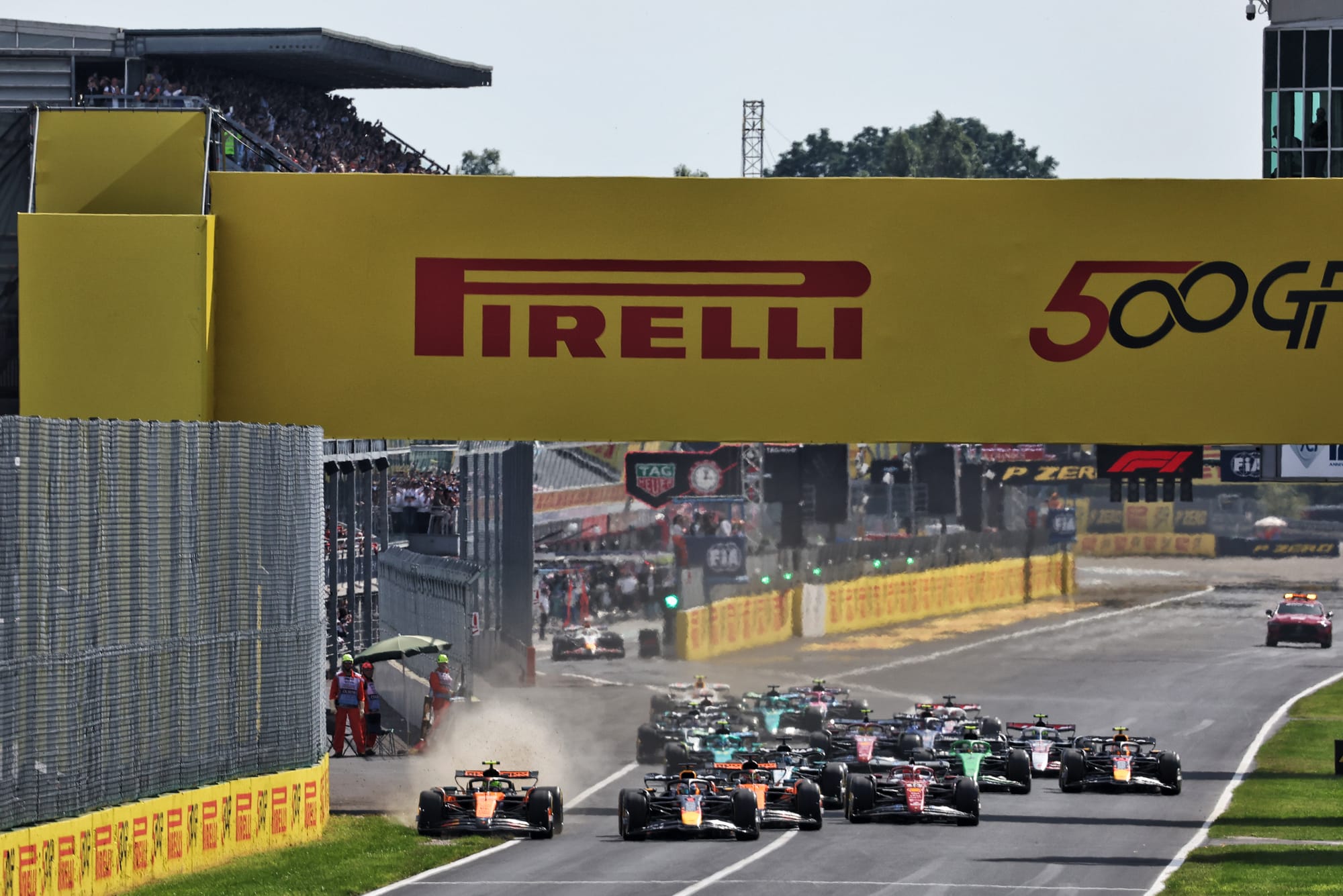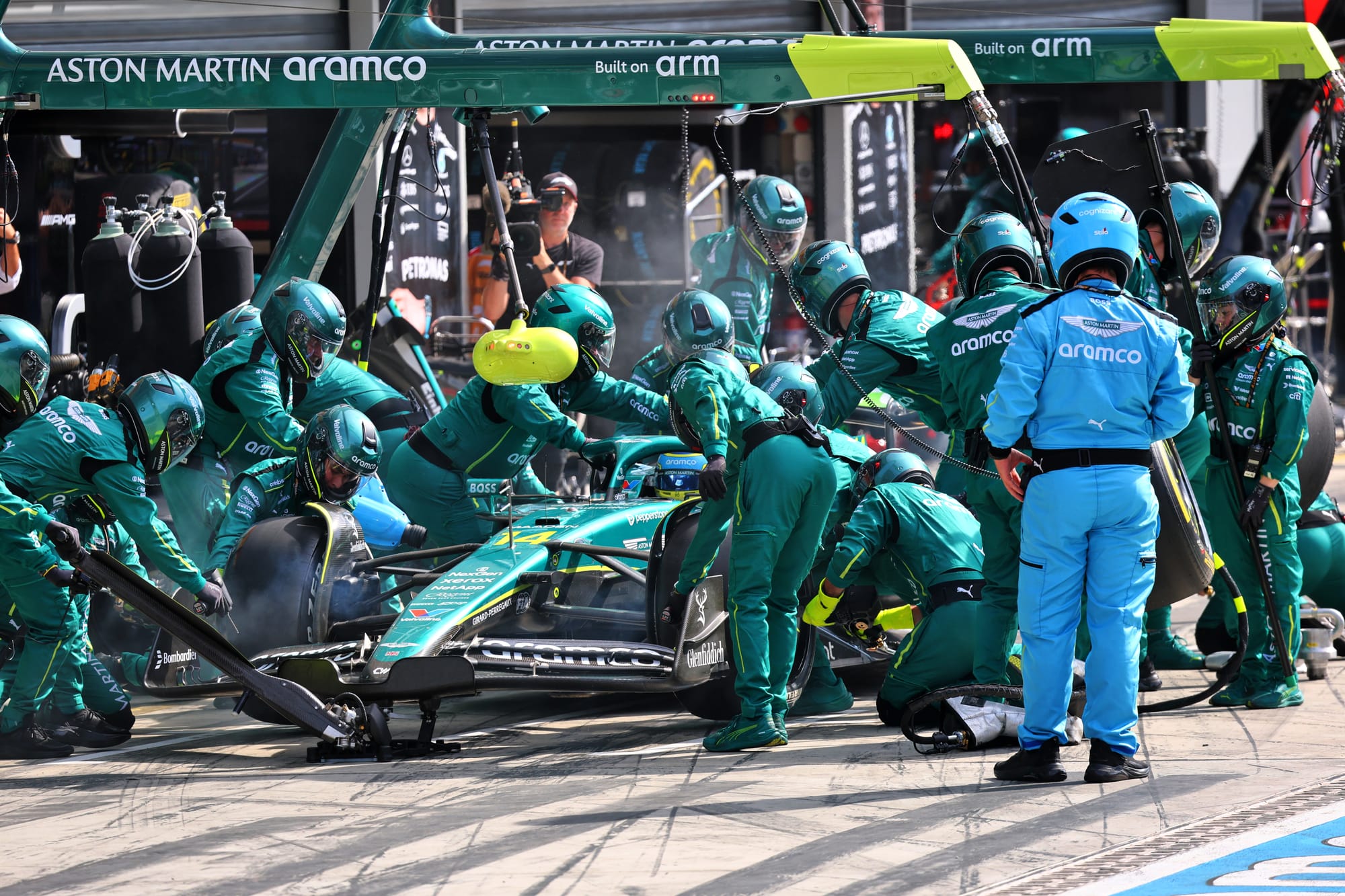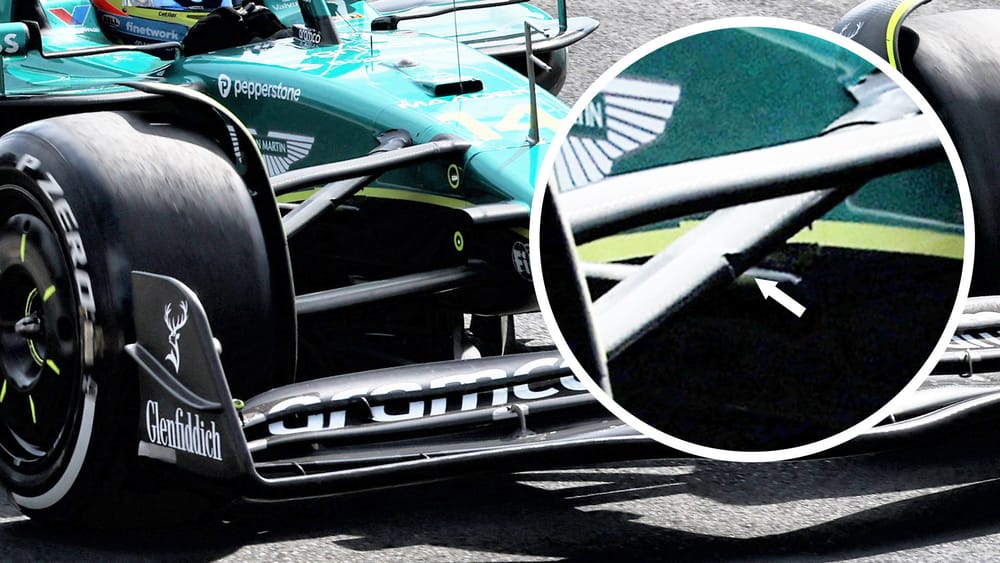The bizarre circumstances of Fernando Alonso’s Italian Grand Prix retirement with suspension failure triggered by a lap one gravel strike has resurrected a safety debate in Formula 1.
Post-race analysis by Aston Martin as to why Alonso’s suspension failed late in the Monza race revealed that his right front pushrod had been weakened by a direct strike from a rock thrown up by Lando Norris’s McLaren on the run to the first corner.
As can be seen on our image (above), the hit took a chunk out of Alonso’s suspension element which, as further load was put through it over the remainder of the race, deteriorated before collapsing entirely.
While there was a huge element of misfortune in what happened, with Aston Martin having never experienced something like that before, the team is taking no risks and has further strengthened the part for this weekend’s Azerbaijan Grand Prix.
But, as Aston Martin’s sporting director Andy Stevenson has explained, there is a wider F1 issue at play here – with the dangers of flying gravel something that has become a more pressing matter amid the move away from asphalt run offs everywhere.
“We are having these discussions with the FIA, and we have for some time,” he explained.
“We've heard drivers complain about the gravel and the rocks hitting fingers in races, and I know that the FIA are working hard with the circuits to try and find a solution.
“I think one of the solutions has been run in the last corner in Silverstone, where the gravel is much, much lighter.
“So with the teams and the FIA, we're trying to work to fix this. We know that gravel [being put down] is avoiding the track limits [issues] that we've been sort of battling with for a long time.
“If we can find a better solution we will, but at the moment gravel is here to stay.”
The onboard smoking gun

Aston Martin had been left confused about the cause of Alonso’s suspension failure in the immediate aftermath of the Italian GP.
The front suspension part was to a configuration that had run for many years, and nothing had shown up in the telemetry data that offered any hint of there being a problem.
It was only when it got access to the onboard footage from Alonso’s car after the race weekend that it got to the bottom of what had caused the issue.
“We were monitoring all the loads that are going through the car, and we hadn't seen anything that we were nervous of,” he said. “So we were a little bit at a loss as to what had caused it.
“This week we had a lot more information to work with, one mainly being the onboard camera footage.
"What we can see from the start of the race going down into Turn 1, a huge piece of rock gets kicked up by Lando's car as he sort of went off track a little bit as he and Max were dicing.
“It comes straight towards Fernando's car. A direct hit on the front right push rod. It was nothing we would have seen in the race.
“So we had to slow down the video footage, really, really, slowly frame by frame - and that’s not something we could do in the race because we would have had 30-odd laps of footage to look through.
“Fortunately for us, once we had this footage and started looking at it, it became very apparent really, really quickly what had happened.”
One thing that Aston Martin cannot be sure of, though, is how big the piece of gravel or rock that struck Alonso’s car was – as it obviously bounced away after hitting the suspension.
But Stevenson says the incident does highlight how different tracks can throw up varied elements.
“Strangely enough in Formula 1, where we analyse everything to the nth detail, depending on the circuits that we go to, they have different-sized gravel and rocks," he added.
“It's very difficult to standardise that because circuits around the world have all sorts of different cars racing around them, so they can't do everything specific for Formula 1.
“Without having it in my hand, and I've seen the shot and I've seen it come towards the car, where it was a piece of natural rock from out of the ground or was it a piece of gravel from an actual gravel trap, I couldn't tell you.”
The unseen second Aston Martin failure

Alonso’s suspension failure was not the only big issue that Aston Martin suffered in Italy, as Lance Stroll’s race was also derailed by a delayed final stop.
Stroll lost 16 seconds in his tyre change after his pit lane gantry lights failed to go green after the stop had been completed.
Stevenson explained that this was as a consequence of an unprecedented electrical failure – with remedies now put in place to prevent a repeat.
"It's a piece of equipment that we've used for many years and is regularly serviced,” explained Stevenson.
“We operated it exactly the same way in Monza as we do every other weekend. But unfortunately, just as Lance's pit stop was starting, we had a complete power shutdown on the rig.
“Nowadays we're so reliant [on the systems]. In the old days, it was all done by just pneumatics and feel, and people putting their hands in the air. But there are so many sensors involved now to release the car to make sure it's released safely.
“When you have a complete power shutdown, we then have to go into a manual mode. And we've never experienced that on this piece of equipment.”
Stevenson said that while the stop had been far from ideal in being so long, it did at least highlight that safety systems in place to prevent cars leaving early did work.
“We could say that our procedures worked, but they weren't particularly efficient,” he said.
“So the car didn't leave the box, which is good. And when it did leave the box, we were confident that all the wheels and tyres had been fitted correctly, and it was safe for Lance to continue.
“We’ve identified what caused the shutdown and that will not happen again.”



